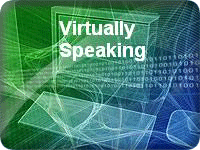There’s been plenty of speculation in the media about what Dell’s proposed $67 billion acquisition of EMC will mean for its subsidiary, server virtualization giant VMware.
At the moment it’s believed the near-term future of VMware under Dell is that it will stay as it is — a publicly traded company that’s 80% owned by its parent company.
But there are questions  to be asked about how VMware will fare in the future under Dell ownership. For example, what will happen to Dell’s server virtualization partnership with Microsoft and Microsoft’s Hyper-V hypervisor technology?
to be asked about how VMware will fare in the future under Dell ownership. For example, what will happen to Dell’s server virtualization partnership with Microsoft and Microsoft’s Hyper-V hypervisor technology?
Will both companies be happy to continue it when one partner, Dell, is the master of the 400-pound server virtualization technology gorilla that is VMware?
And what about VCE, EMC’s converged infrastructure operation that matches EMC storage technology and VMware know-how with Cisco compute and networking components?
Under Dell ownership, VMware’s VCE could be transformed into an entirely in-house affair, with the Cisco compute and networking contributions replaced by Dell ones. That could make VCE more competitive, which would be good news for VMware.
While it’s too soon to know the answers to these questions at the moment, what is pretty clear is that as far as VMware is concerned it’s business as usual — at least for now.
VMware Debuts vRealize Automation 7
So what’s VMware up to at the moment? In Barcelona in mid-October the company hosted its VMworld 2015 Europe conference, and it took the opportunity to take the wraps of the latest releases of two of its products: vRealize Automation cloud automation software, which automates the delivery of IT services in hybrid clouds, and vRealize Business, which provides costing and pricing of hybrid clouds.
When it comes to what’s new, the big thing in the latest version 7 release of vRealize Automation is the introduction of unified service blueprints. These let you design entire services “on a single canvas” to help you stand up multi-tier applications and tie in networks and security services that are customized to the applications’ specifications. The networking magic is done with VMware’s NSX software-defined networking (SDN) system. The company acquired the NSX network virtualization technology from Nicira in 2012 in a $1.26 billion deal.
“In the end, this comes down to the fact that most companies stand up software stacks manually. Lots of organizations do it, but it is time consuming, so it can take six months to stand up an app,” Christian Paulus, VMware’s director of product marketing, Cloud and DevOps Enterprise Management, explained to Virtually Speaking.
“Now you can provision networks and make them app centric, so if an app has a specific security requirement, you could dynamically provision a firewall, or if it needed high performance you could provision a load balancer. Customers normally do this manually, but now you can automate it through an API. This reduces the time needed by 80% – 95%,” he added.
These new blueprints will work in hybrid private/public clouds, with out-of-the-box support for VMware’s own vCloud Air public cloud platform and Amazon Web Services (AWS).
The new release also introduces an Event Broker, which will allow new functionality to be added and integrations to be made that won’t break when you upgrade systems, according to Paulus.
VMware Also Unveils vRealize Business 7 Standard
VMware has also unveiled vRealize Business 7 Standard, which helps companies with costing and pricing of hybrid clouds and services that are offered through a self-service catalog or by other means.
The previous release worked with VMware’s own vCloud Air public cloud platform, but this release now supports costs and pricing from AWS, Microsoft Azure, and all public clouds supported by vRealize Automation.
It also has a few other tricks up its sleeve.
“You can now run simulated workloads, so you can see what that means for your remaining capacity and know when you need to add more capacity — and at what cost,” says Paulus.
“You can also do resource reclamation. Typically you’ll get 20% – 30% capex savings by reclaiming these resources.”
These new releases have been in the pipeline for some time, and won’t be available to put in to production until later in the year. But it’s certainly reassuring for VMware customers that it’s business as usual at the company (or seems to be), despite the change in ownership that VMware will shortly be experiencing.
VMware vRealize Automation 7 and VMware vRealize Business 7 Standard are both expected to become available in Q4 2015.
VMware vRealize Automation 7 will be available as a standalone product and as part of VMware vCloud Suite and VMware vRealize Suite. The software is sold standalone in two editions: Advanced ($400 per Operating System Instance or OSI) and Enterprise ($775 per OSI). The vRealize Suite is available in two editions: Advanced ($6,750 per CPU) and Enterprise ($9,950 per CPU).
VMware vRealize Business 7 Standard will be available as a standalone product and also as part of the VMware vCloud Suite and VMware vRealize Suite. The software is sold standalone in 25 OSI packs at $200 per OSI.
Paul Rubens is a technology journalist and contributor to ServerWatch, EnterpriseNetworkingPlanet and EnterpriseMobileToday. He has also covered technology for international newspapers and magazines including The Economist and The Financial Times since 1991.

